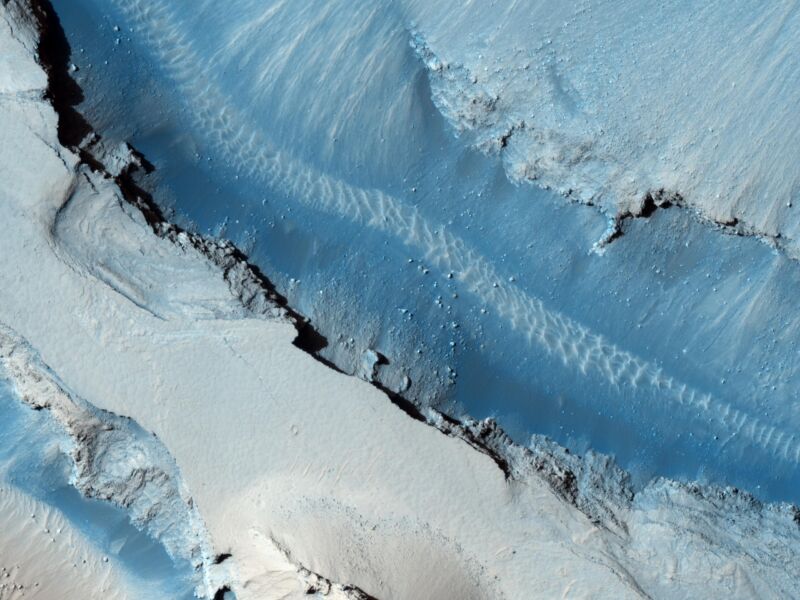Marsquakes, recent volcanism suggest Mars still has a mantle plume

Enlarge / One of the rifts in the Cerebrus Fossae area, potentially created by the stretching of the crust driven by a mantle plume. (credit: NASA/JPL-Caltech/University of Arizona)
The Mars InSight lander included the first seismograph placed on the red planet, and it has picked up everything from marsquakes to impacts and provided lots of new information on Mars' interior. But perhaps its most striking finding has been that almost all of Mars' seismic activity appears to originate from a single location, a site called Elysium Planitia.
That area is also the site of the most recent volcanic activity we've detected on Mars. In a paper released this week, scientists argue that both derive from a single source: a plume of hot material rising through the mantle. It's the sort of geological activity that creates hotspots like Iceland and Yellowstone on Earth, but it had been thought that Mars had cooled too much to support those activities.
Building a caseElysium Planitia is a generally flat region covering roughly a million square kilometers. It's just at the edge of Mars' northern lowlands, but it sits nearly a kilometer above them. Many of its features are old, including a series of ridges thought to be caused by the compression of Mars' interior as it cooled. But it also has signs of recent volcanic activity, though not nearly as much as the nearby Tharsis region, which contains Mars' largest volcanoes.